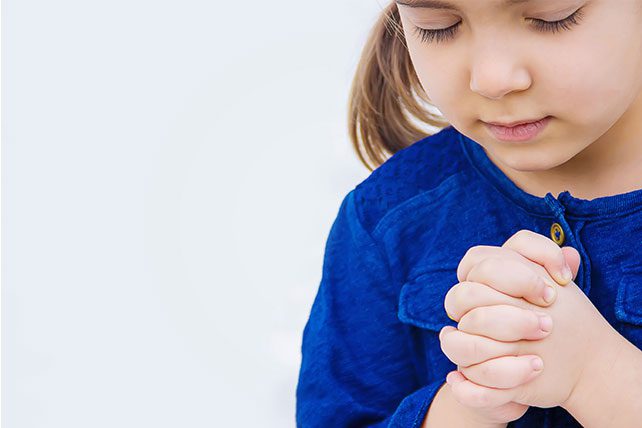Saying heartfelt prayers to God helps nurture children’s faith. For kids to grow close to Jesus, they need to know he’s always listening. Teaching children to pray involves more than rote recitation, though. Heartfelt prayers are everyday conversations with God that become natural parts of life.
Children’s ministers, Sunday school teachers, and parents can teach and model heartfelt prayers. Discover expert insights for helping kids harness the power of prayer.
11 Suggestions for Nurturing Heartfelt Prayers
Use these practical tips to help kids go to God in prayer.
1. Start with simple, relatable language.
When teaching kids to pray, use age-appropriate wording. Children understand better when terms are familiar and clear. Explain that praying is like talking to a friend. Jesus is always ready to listen and help. This makes prayer less intimidating for young minds.
2. Create a routine.
Consistency builds any habit, including prayer. First build a routine that includes prayer in daily activities. Pray before meals, at bedtime, and during car rides. Then prayer will become natural. Routine prayers create a rhythm that kids come to expect and enjoy.
3. Encourage personal heartfelt prayers.
Yes, memorized prayers have a place. But also help children express their own thoughts and feelings in prayer. Let kids know they can talk to God about anything. That includes happy moments, worries, gratitude, and daily activities. Personal prayers show children that God is interested in their life.
4. Use visual aids and activities.
Next, many children are visual and kinesthetic learners. So use visual aids like prayer jars and walls. Have kids add prayer requests or notes of thankfulness. Then devote time to praying for those things. Crafts like prayer bracelets also help children pray creatively.
5. Model prayer in all situations.
Children learn by observing adults. So model heartfelt prayers for them. Share your own prayer life openly, whether giving thanks, asking for guidance, or expressing concerns. When children see parents, teachers, and pastors pray, they’ll follow that behavior. Then they can develop their own prayer habits.
6. Teach through biblical accounts.
The Bible is filled with people who prayed. Use them to teach kids about different purposes of prayer. Daniel in the lions’ den, Hannah’s prayer for a child, and Jesus praying in the Garden of Gethsemane are powerful examples of faith. Discuss and relate these to children’s own experiences and prayers.

